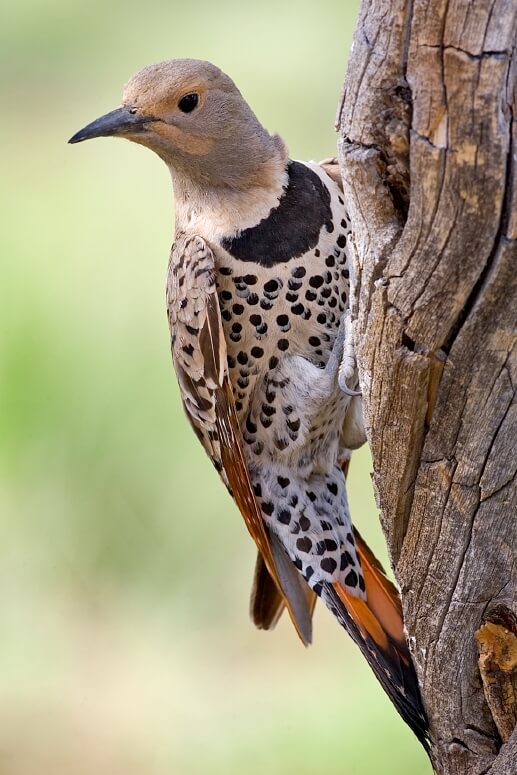Facts About Northern flicker
The northern flicker, also known as the common flicker, is a medium-sized bird belonging to the woodpecker family. These birds are found across North America, parts of Central America, Cuba, and the Cayman Islands. One of the most fascinating aspects of their behavior is their migratory pattern. They have over 100 common names, many of which are inspired by their distinctive calls.
From a taxonomic perspective, the northern flicker was first described by Mark Catesby in the 18th century. It belongs to the genus Colaptes, and there are several recognized subspecies. Previously, the northern and red-shafted flickers were considered separate species, but they are now classified as one due to their interbreeding.
In terms of appearance, northern flickers have brown feathers with black bars, a distinctive black patch on the upper breast, and males possess a moustachial stripe. Their calls are unique, often described as a sustained laugh. When it comes to their diet, these birds primarily consume insects, especially ants, but they also have a penchant for fruits, berries, and seeds.
Northern flickers are known for their distinctive undulating flight pattern and their drumming on objects, which serves as a means of communication and territory defense. They prefer open habitats near trees and typically nest in tree cavities. Their breeding range encompasses North America, and they are cavity nesters.
Their diet is quite varied, including insects, fruits, berries, and seeds. They utilize formic acid from ants for preening. Noteworthy behaviors include "anting" and breaking into ant colonies to feed. Northern flickers generally live about 8 to 9 years, with both males and females exhibiting similar survival rates.
During the breeding season, they build nests in trees and usually lay six to eight eggs. Both parents share the responsibilities of incubation and feeding the young. They also migrate, with northern populations moving to southern regions for the winter.

 United States
United States